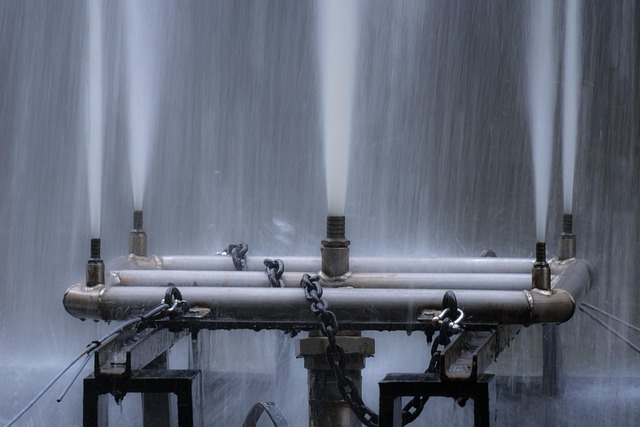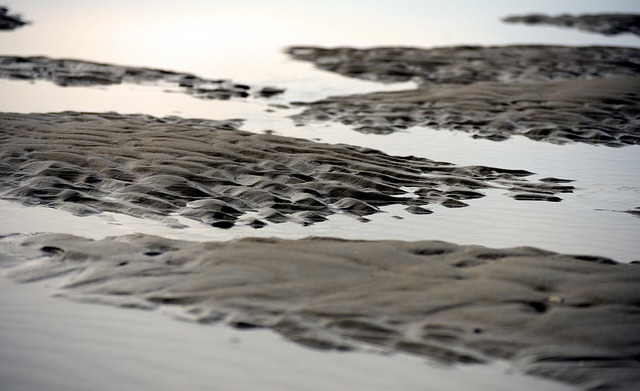Low water pressure in homes is often caused by mineral buildup from hard water, plumbing leaks, or outdated regulators. Regular maintenance involves flushing systems and checking for leaks to prevent scale buildup and reduce pressure loss. Prompt repair of faulty fixtures ensures optimal water pressure throughout the home, addressing common causes identified through troubleshooting.
Are you experiencing weak water flow and low pressure at home? Don’t worry, you’re not alone. This comprehensive guide delves into the common household causes behind this frustrating issue, from leaky faucets to clogged pipes. We also explore plumbing issues that can lead to weak water flow and provide troubleshooting solutions to help restore optimal pressure. Get ready to reclaim your powerful shower and smooth running taps!
- Common Household Causes of Low Water Pressure
- Plumbing Issues Leading to Weak Water Flow
- Troubleshooting and Solutions for Restoring Pressure
Common Household Causes of Low Water Pressure

Low water pressure can be a frustrating issue for any homeowner, and there are several common household causes to consider when troubleshooting this problem. One of the most frequent culprits is a simple buildup of mineral deposits or sediment in your pipes over time. Hard water, rich in minerals like calcium and magnesium, can leave behind residue that narrows the pipe walls, restricting water flow and reducing pressure throughout the entire system.
Another everyday cause could be leaks within the plumbing system. Even small leaks can significantly impact water pressure, as the constant loss of water reduces the overall volume available for distribution. Check your fixtures, pipes, and appliances for any signs of leaks, including dripping faucets or wet spots along the walls. Additionally, an old or faulty water pressure regulator might be to blame, especially if you’ve noticed a sudden drop in pressure. Regular maintenance and timely repairs can help prevent these issues from becoming major causes of low water pressure in your home.
Plumbing Issues Leading to Weak Water Flow

Low water pressure can often be attributed to various plumbing issues within your home’s water distribution system. One common cause is a buildup of mineral deposits or sediment in pipes, which can restrict water flow and reduce pressure. Over time, hard water minerals like calcium and magnesium accumulate, forming scale on pipe walls. This reduces the diameter of the pipes, hindering water flow and leading to lower pressure at fixtures.
Another potential issue is an outdated or faulty plumbing system. Older pipes might have corroded or developed leaks, causing a decrease in water pressure. Additionally, worn-out valves, aerators, or pressure regulators can also contribute to weak water flow. These components play a vital role in maintaining proper water pressure throughout the system, and their malfunction can result in noticeable drops in pressure at taps and showers.
Troubleshooting and Solutions for Restoring Pressure

Troubleshooting low water pressure begins with identifying the causes, which can vary from simple to complex issues. One common culprit is a buildup of mineral deposits in your pipes or water heater podcast, leading to reduced water flow and pressure. This often results from hard water conditions, where minerals like calcium and magnesium accumulate over time.
To restore pressure, try flushing your system by shutting off the water supply at the main valve, then opening hot and cold taps until the water runs clear. Another solution involves installing a water softener to reduce mineral buildup. Additionally, checking for leaks in pipes and fittings is essential as even small drips can significantly decrease overall pressure. Replacing faulty fixtures or repairing leaks can quickly resolve this issue.
Low water pressure can be a frustrating issue, but understanding its causes is the first step towards restoration. Whether it’s due to common household factors or plumbing problems, identifying the root cause is key. By troubleshooting and implementing suitable solutions, you can effectively restore optimal water pressure in your home. Remember, addressing these issues promptly ensures a steady flow of water for your daily needs.
